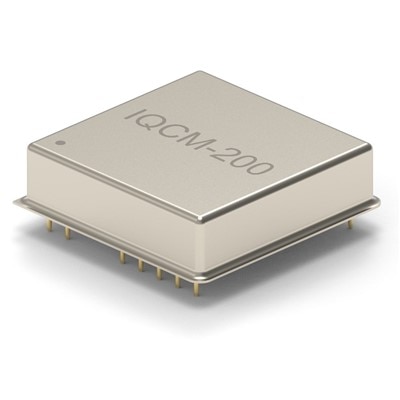The IQCM-200 is a disciplined OCXO, incorporating sync to a 1 PPS (pulse per second) input as well as a 1 PPS output. Its exceptional holdover stability and accuracy makes this particular product a superlative Disciplined OCXO.
The IQCM-200 is part of a series of disciplined OCXOs available from IQD. This particular model is the smallest sized OCXO capable of achieving a holdover capability of 1.5µs over 24 hours meaning you can rest assured your devices can continue to function with incredible accuracy during a holdover period.

This ‘best in class’ holdover stability of up to 1.5 μs over 24 hours across 0 – 60 °C, and 25 µs typical in 10 days at 25 ±2 °C is achieved using an adaptive algorithm. Internal parameters of the algorithm, including maintenance alarms and message functions are available to the user via a serial interface. A Frequency stability better than ±0.02 ppb is achievable.
Extensive in-house testing of the ICQM-200 has been carried out by our engineers here at our laboratory in the UK. In these controlled tests the holdover achieved by the IQCM-200 after 10 days was a very impressive 25.5 μs, ideal if your application requires a longer holdover than 24 hours. Tests also concluded ADEV figures as 2.2E-12 @ τ = 1 s.
Due to its exceptional holdover times, this product is ideal for applications that require an accurate time reference, Telecoms LTE and 5G timing, and PTP GM clocks with the required IEEE 1588 holdover support, and within White Rabbit applications. This particular model will be an excellent asset to power sector products which require increased holdover times due to the emerging changes and requirements within this sector. The IQCM-200 is compliant with MiFID II.
An IQCM Evaluation Board is also available for this series (contact . Details on all the tests carried out including the 10 day holdover can be found in the IQCM-200 handbook. For your copy please contact sales and support teams at any time.

